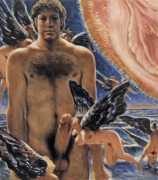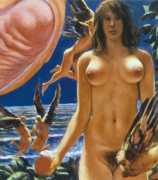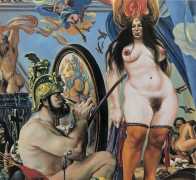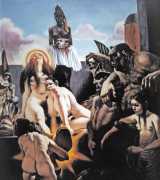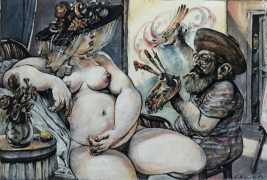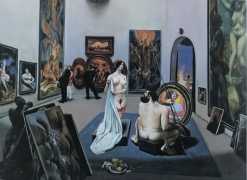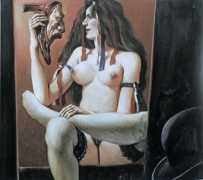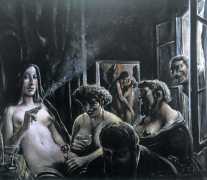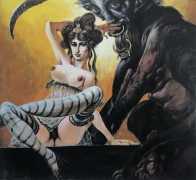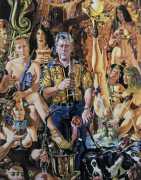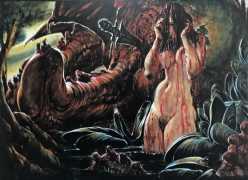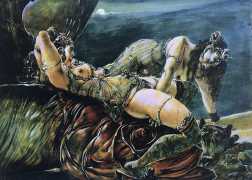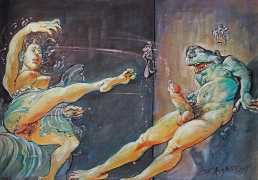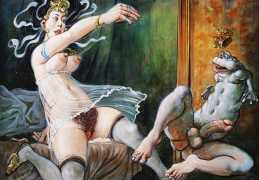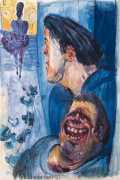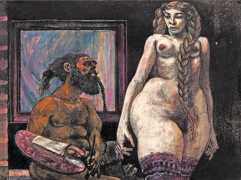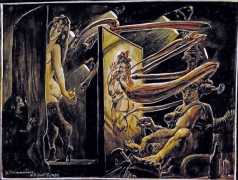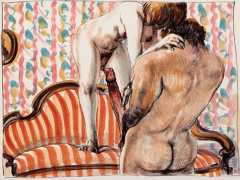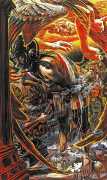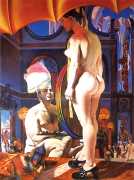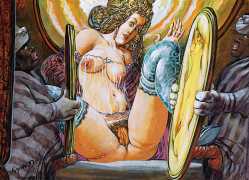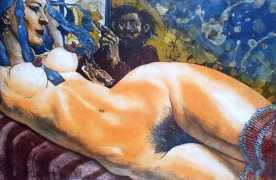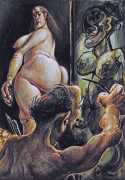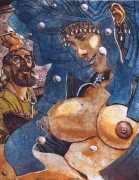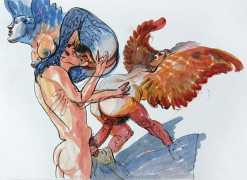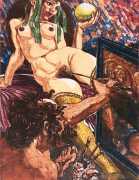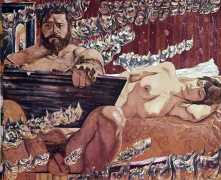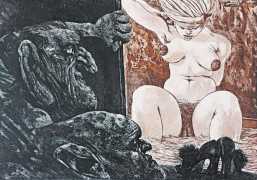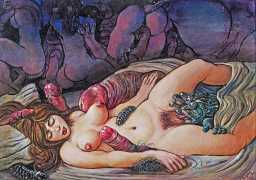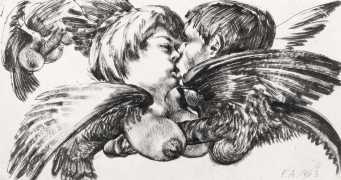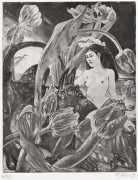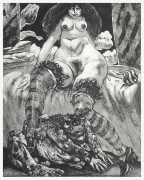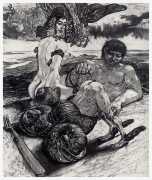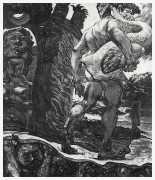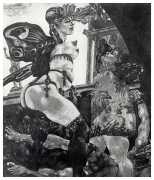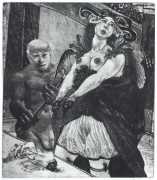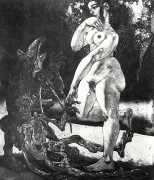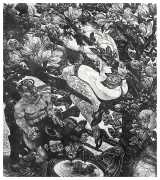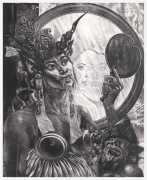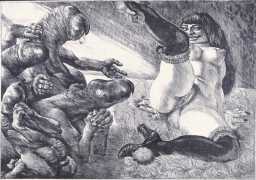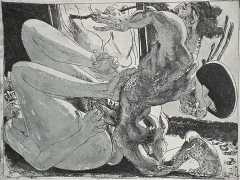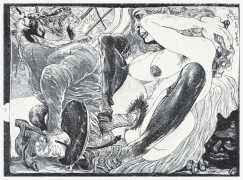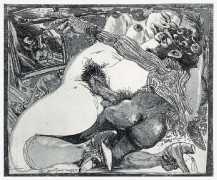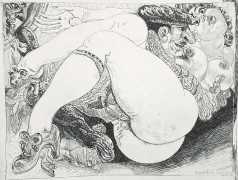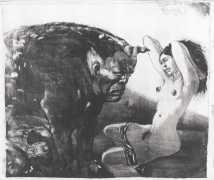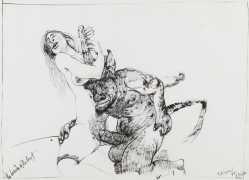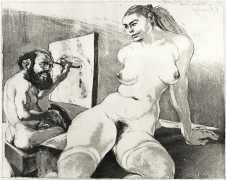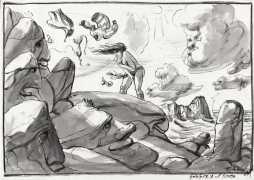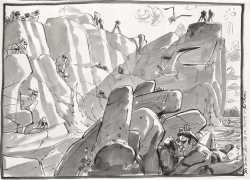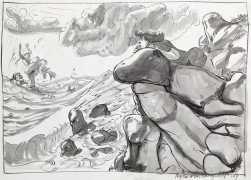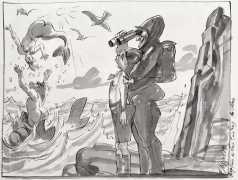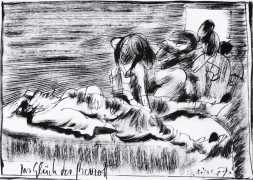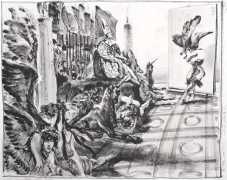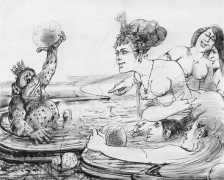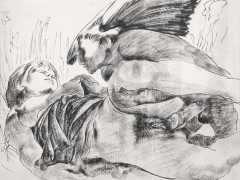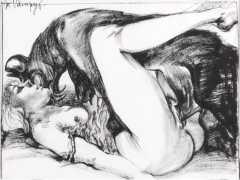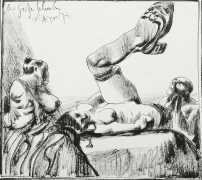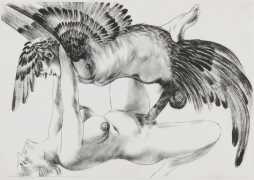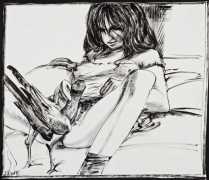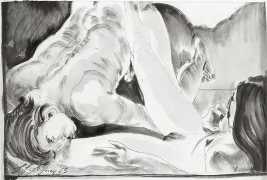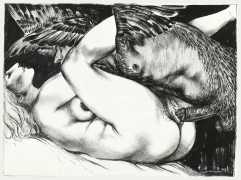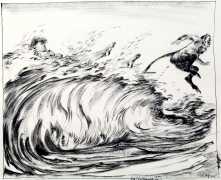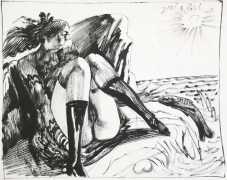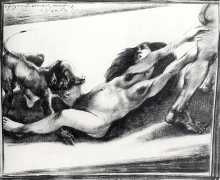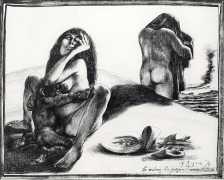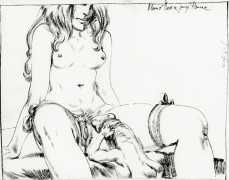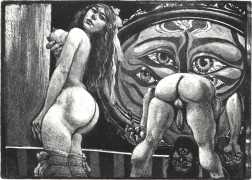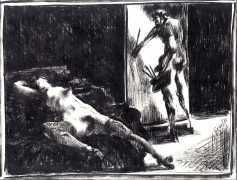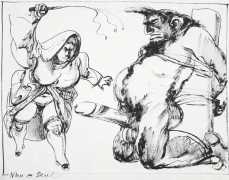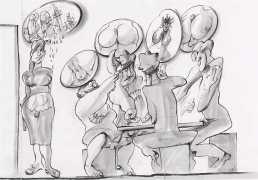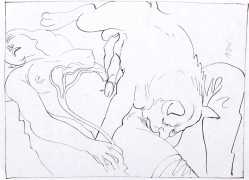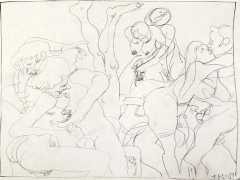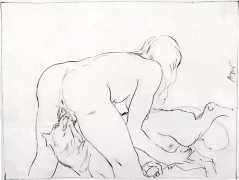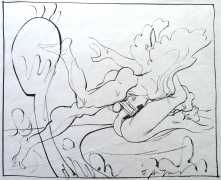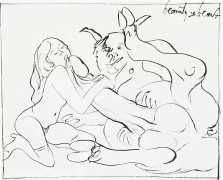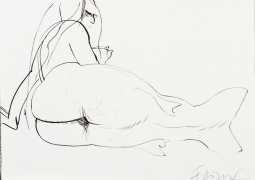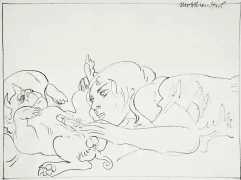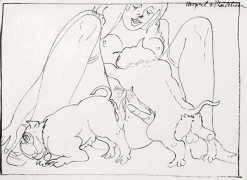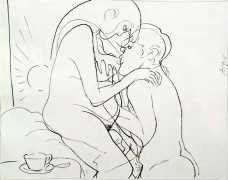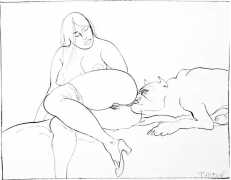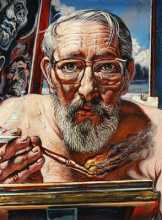 ‘Fritz Aigner is a brilliant technician. He paints like an old master, his colours so splendid and luminous, his glazes so glossy, his thematic conception so objective that the audience hardly notices the profound context. These characteristics place Aigner as a Surrealist, but this does not begin to explain the impact of his work. In his work the fantastic always prevails, turning every image into a deep shared experience.’ Thus writes art historian Hannes Etzlstorfer in his introduction to the most complete introduction to Aigner’s life and work, the 2010 Fritz Aigner: Wunderkind und Malmaschine (Fritz Aigner: Wonder-child and Painting-machine).
‘Fritz Aigner is a brilliant technician. He paints like an old master, his colours so splendid and luminous, his glazes so glossy, his thematic conception so objective that the audience hardly notices the profound context. These characteristics place Aigner as a Surrealist, but this does not begin to explain the impact of his work. In his work the fantastic always prevails, turning every image into a deep shared experience.’ Thus writes art historian Hannes Etzlstorfer in his introduction to the most complete introduction to Aigner’s life and work, the 2010 Fritz Aigner: Wunderkind und Malmaschine (Fritz Aigner: Wonder-child and Painting-machine).
Yet until recently a full appreciation of Aigner’s work was limited to a small circle of admirers and gallery-owners in his home city of Linz in Lower Austria. The Oberösterreichische Landesgalerie, for example, did not exhibit his work until 1995, together with his fellow Linz artists Josef Fischnaller and Erich Ruprecht. Even in the Österreichische Galerie Belvedere in Vienna, responsible for the comprehensive documentation of Austrian artistic creation, Fritz Aigner does not appear in their inventory lists with a single work.
Aigner showed early talent as an artist, and in 1947, without ever having to take an entrance exam, he was accepted at the Akademie der bildenden Künste (Academy of Fine Arts) in Vienna to study with Sergius Pauser. In 1952 he won an Austrian state fine arts prize for his artwork Die Klage des verlorgenen Sohnes (The Prodigal Son’s Lament). Throughout the 1950s and early 60s he painted mostly religious and mythological works, though always with an original eye for the deeper meaning within his subject matter. He was very much influenced by Picasso and by the British painter Francis Bacon, though Rembrandt was an overriding influence, so much so that some in his circle called him ‘The Rembrandt of Linz’.
He travelled widely in Europe, starting with a visit to Spain in 1954, and most importantly extended periods in Ireland in 1966 and in London in 1967–8. He was married twice, first to the woodworker Auguste Kronheim in 1956, with whom he had a son and a daughter, then after their divorce in 1969 to the ballet teacher Helga Träxler. They had six children, three of whom – Paul Florian, Matthias Claudius and Lukas Johannes – also became artists.
We would like to thank our Russian friend and contributor Yuri for introducing us to the work of this artist and supplying many of the images.


